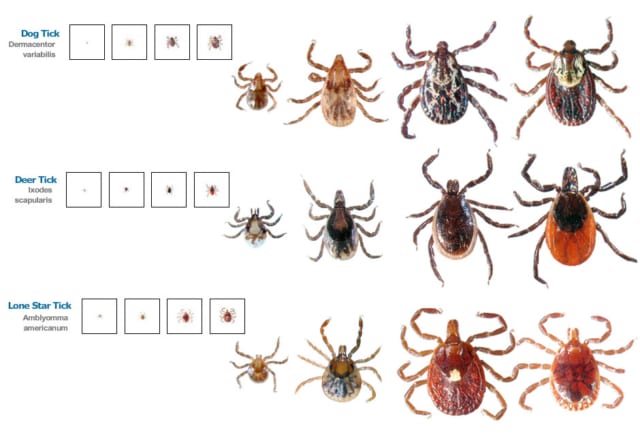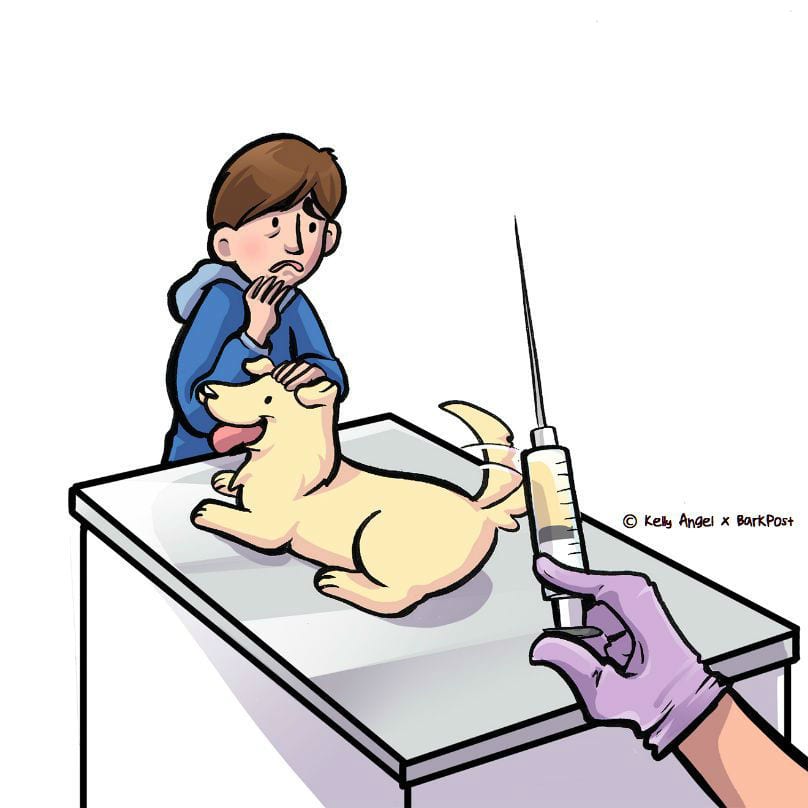Back in May BarkPost reported the story of Ollie the Sheltie who narrowly escaped euthanasia when the cause of his mystery illness was discovered purely by accident. A veterinary intern just happened to be stroking Ollie’s ear in what would have been his final moments when she felt a small lump – it was a tick. Ollie was diagnosed with a rare and dangerous condition known as tick paralysis.


It turns out Ollie had been camping with his family a few weeks before his symptoms began and must have picked up the parasite at that time. Because the nasty little bugger attached itself inconspicuously behind Ollie’s ear, his people simply did not notice it.
At the time it was removed, the tick had become engorged to twice its normal size from feeding on Ollie’s blood. His health slowly improved over the next few days and we are glad to report that he is still doing well today.


As frightening as the symptoms are, most dogs diagnosed with tick paralysis begin to recover in just a matter of hours once the parasite is removed, and make a full recovery within 3 days. However, if the tiny tick is not located in time, the patient may die when the paralysis begins to affect the respiratory system.
[bp_related_article]
In order to prevent another terrifying story like Ollie’s (or worse) we felt compelled to share more about how tick paralysis is transmitted, treated and prevented with our readers.


Tick paralysis is caused by a neurotoxin in the saliva of female ticks. The toxin enters the bloodstream as the parasite feeds and causes ascending paralysis – meaning that the lower limbs are affected first, followed by the upper extremities. The condition may turn fatal if the diaphragm becomes paralyzed leading to respiratory arrest.
Four species of tick are known to cause tick paralysis according to the American Lyme Disease Foundation:
- Rocky Mountain wood tick
- American dog tick
- Deer tick
- Lone Star tick


Dogs usually develop symptoms within 2 – 7 days of a tick attaching and beginning to feed. It begins with weakness in the rear limbs and a wobbly, unsteady gait. The terrifying symptoms quickly progress to full on paralysis of all four limbs and ascend to the trunk, neck and head.
Symptoms of later stage tick paralysis include vomiting, gagging, trouble swallowing or breathing and a change in bark tone. At this stage every moment counts when diagnosing the condition and locating the tiny assassin before it’s too late.


Once it is determined that the patient is suffering from tick paralysis, the treatment is simple – remove the tick. The parasite is releasing a steady flow of neurotoxin into the bloodstream the entire time it is attached. Removal cuts off the supply of toxin and allows the dog’s body to begin to reverse the damage within just a few hours. Veterinary staff will detach the tick with forceps or by using a topical insecticide to kill it.


If the condition has progressed into the respiratory distress stage, supportive care will be necessary until the neurotoxin fades. All dogs recovering from tick paralysis should be kept quiet and confined with regular supervision until they regain their muscle strength.
As with all parasite related illnesses, the safest method of treatment is prevention. Some areas of the U.S. have a greater issue with ticks than others and the risk is highest between April and June when they are emerging from hibernation. Ticks cannot fly or jump so they wait on the tips of tall grass and low shrubs until an unsuspecting host brushes by, then climb on.


They often prefer to hide out in dark places and crevasses on their hosts like the insides of the ears and the groin. This is why it is important to check your pets thoroughly for ticks each and every time they come inside. Preventative treatments come in many forms from topical solutions like Advantix, oral medications like NexGard, and deterrent collars like the Seresto Collar. Ask your veterinarian which methods are best for your dog.


Few things are more frightening or heartbreaking than watching your dog suffer from a debilitating condition like tick paralysis. Know the risks in your area and make sure your pup is protected. Tick paralysis is most commonly seen in dogs, but can also affect cats and humans – especially children – so it’s important to protect the whole family.
H/T to pethealthnetwork.com
Featured Image via @Falllie/Instagram & @Ollie_The_Yorkie_/Instagram






